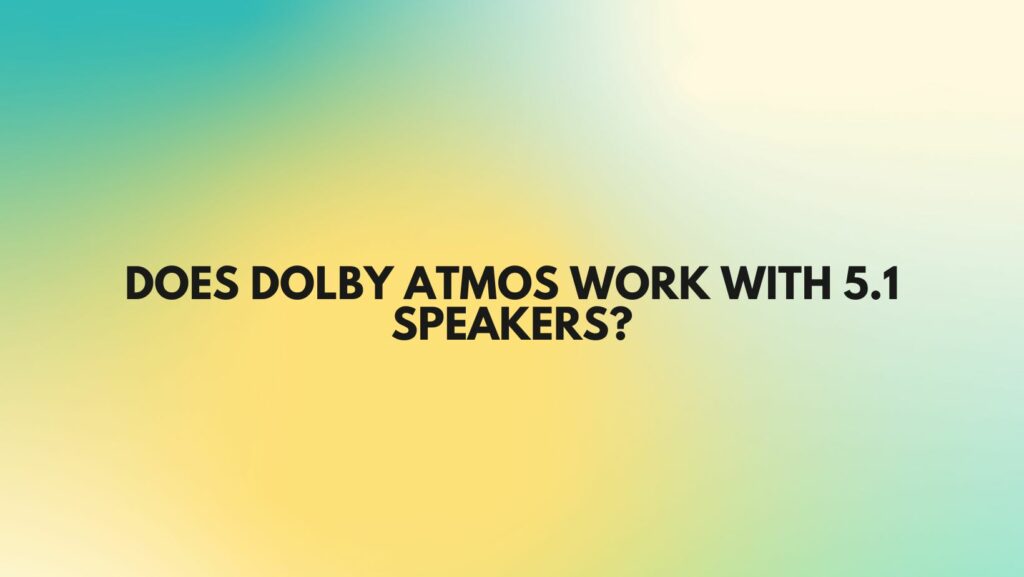In the realm of audio technology, Dolby Atmos has emerged as a revolutionary force, transforming the way we experience sound in movies, music, and gaming. Its three-dimensional, immersive audio has become synonymous with cutting-edge entertainment. However, a common query among enthusiasts is whether Dolby Atmos is compatible with 5.1 speakers, a popular surround sound setup. Let’s delve into this intersection of technology and acoustics to understand the dynamics at play.
Understanding Dolby Atmos:
Dolby Atmos is not just another audio codec; it’s a leap forward in spatial audio technology. Traditionally, surround sound systems like 5.1 utilize channels to direct audio to specific speakers in a fixed configuration. In contrast, Dolby Atmos introduces height channels, allowing sound to move freely around the listener in a three-dimensional space.
The Magic of Height Channels:
One of the distinguishing features of Dolby Atmos is its ability to create an overhead sound dimension. This is achieved through speakers placed above the listener, adding a vertical element to the audio experience. However, this might lead to the misconception that Dolby Atmos is exclusively for setups with dedicated overhead speakers.
Compatibility with 5.1 Speakers:
The good news is that Dolby Atmos is designed to be flexible and compatible with various speaker configurations, including 5.1 setups. While traditional 5.1 systems lack dedicated height channels, Dolby Atmos can adapt by employing upward-firing speakers or virtual processing.
Upward-Firing Speaker Modules:
To bring Dolby Atmos to a 5.1 setup, one option is to incorporate upward-firing speaker modules. These specialized speakers bounce sound off the ceiling, simulating the effect of overhead channels. This allows users with existing 5.1 speaker systems to enjoy the immersive audio experience Dolby Atmos offers without major speaker rearrangements.
Virtual Processing:
Another approach involves the use of virtual processing technology. Dolby Atmos can apply complex algorithms to existing audio tracks, creating the illusion of height channels. While not as precise as dedicated speakers, virtual processing offers a viable solution for those seeking a taste of Dolby Atmos without a complete speaker overhaul.
Optimizing the Experience:
For users with 5.1 speakers exploring Dolby Atmos, it’s crucial to optimize the system for the best results. This includes configuring speaker placement, adjusting angles for upward-firing modules, and ensuring compatible AV receivers with Dolby Atmos support.
Conclusion:
In the dynamic world of audio technology, the marriage of Dolby Atmos with 5.1 speakers brings forth a harmonious blend of tradition and innovation. While dedicated height channels undoubtedly enhance the experience, the adaptability of Dolby Atmos allows enthusiasts with 5.1 setups to partake in the immersive audio journey. Whether through upward-firing modules or virtual processing, the compatibility of Dolby Atmos with 5.1 speakers opens a gateway to a new era of audio excellence. So, gear up, fine-tune your system, and immerse yourself in the symphony of sound that Dolby Atmos has to offer.

